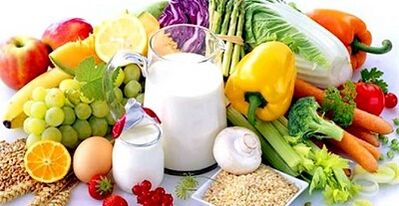
Gout has been called "the disease of aristocrats" for many centuries.It was mainly suffered by people from higher strata, not used to moderation in diet.It is now known for certain that this disease has no relationship with social status, but metabolism plays an important role here.
Improper metabolism and increased levels of uric acid in the blood lead to the development of acute recurrent arthritis.No medication can completely eliminate this disease, but significantly alleviating the patient's condition by minimizing exacerbations is a very real task.
Modern medications help eliminate excess uric acid, reducing its critical level, but still the main condition in the treatment of this complex disease is to follow a special diet.It is through nutrition that the patient can achieve maximum results.
Nutrition for gout
Uric acid, the main enemy of the patient with gout, is formed from purines.The latter is found in large quantities in foods of animal origin, especially in fatty fish and pork.Therefore, meat and fish are almost completely prohibited.
There are purine substances in some plant foods.To minimize the likelihood of relapse, it is necessary to strictly control what the patient eats.
- The main condition is that meals are regular, 3 to 5 times a day.This will ensure the maintenance of the required level of purine substances in the blood, avoiding their excess;
- You can't eat too much.The amount consumed is strictly regulated;
- The reverse process should not be allowed: hunger;
- If the patient is overweight, every effort should be made to eliminate it.But it is necessary to lose weight gradually, with the help of a balanced diet.Losing kilograms too quickly can only worsen the patient's condition.Optimal weight loss – 1-2 kg per month;
- It is very important to drink as much fluid as possible during gout treatment.The norm is 1.5 to 2 liters per day when the condition is stable, and at least 3 liters of water should be drunk when the condition worsens.Water can be replaced by any other permitted liquid;
- An essential element of the daily diet is alkaline mineral water.It helps remove urates from the body, which is important.
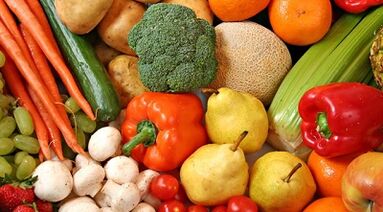
Gout requires a strict approach to food choices;the patient must clearly know what can be eaten and what is strictly prohibited.Only ingredients that do not contain purines or contain them in small quantities are allowed in the diet, which cannot affect the overall level of this substance in the body.
For the most part, these are fruits and vegetables, so following this diet will not be difficult for a potential vegetarian, but it will be much more difficult for a carnivore.But as a result, the patient will feel pain relief and swelling will decrease.
What not to eat if you have gout
It is worth preparing for the fact that this list is not so short.After all, purines that are undesirable for an organism affected by gout are found in many foods.
We will have to accept as a fact that we will have to abandon white bread completely: it contains too much yeast.The latter actively promote the production of uric acid in the body.For the same reason, we are removing all baked goods from use.
What meat products should you not eat?Complete rejection of sausages, sausages and canned meats - they are literally packed with purines.For the same reason we reject the spoils;Fatty pork is also absolutely prohibited.
We also eliminate seafood from the diet of a gout patient.Fatty fish, preserves and caviar are especially prohibited.
You should not eat spicy and salty varieties of cheese;This type of dairy product will do more harm than pleasure when eating it.
We eliminate all legumes from cereals: lentils, beans, soy, beans.The reason is the same: high purine content.
Of the vegetables, only mushrooms and sorrel are strictly prohibited.Until some time ago, tomatoes were also on this list for the simple reason that they contain purines.But its content is so insignificant and the vitamin complex is so significant that today this vegetable has moved from the prohibited list to the opposite list.
Fruits and berries also have a not so extensive list of prohibitions;includes only figs, raspberries and grapes.
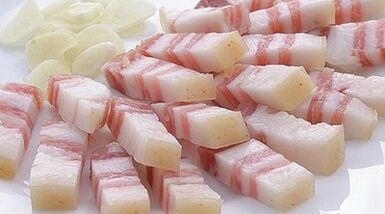
Sweet lovers should refrain from eating too creamy cakes and pastries.
As for fats, it is not advisable to experiment with margarine and lard.
For gout, it is recommended to drink plenty of fluids, but drinking everything is not allowed.The choice of drinks should be treated with the same caution.Therefore, coffee and strong black tea are prohibited.
And this is not even due to the purines present in them: their content is low.But the diuretic effect of these drinks is an undesirable phenomenon.All types of alcohol, including beer and wine, are strictly prohibited.
Gout does not like spicy food, so we completely eliminate pepper, mustard, horseradish and other hot spices from dishes.You should not abuse salt.It is best to avoid it as much as possible.It is unacceptable to put bouillon cubes in dishes.The preservatives and purines they contain are simply off the charts.
Broths based on fish, meat and legumes should also be eliminated from the diet.Remove mayonnaise.
All products on the above list are completely prohibited.They should not be used categorically.At first, it is best to have this list on hand so you can always refer to the list of prohibited items.
It is possible, but be careful.
The above ingredients are completely excluded from use.This list is not very long, the problem is that it includes quite common dishes that are present in the diet of any healthy person every day.Below will be a list of products allowed for consumption.But there is a little compromise between these lists.He absorbed what was acceptable to eat, but little by little.
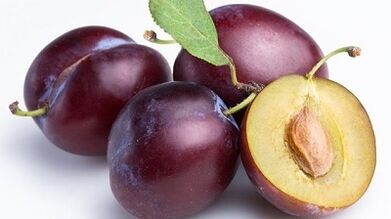
Among vegetables, this list is topped by turnips, cauliflower, radishes, asparagus, celery, rhubarb, spinach, peppers, onions and parsley.All this vegetation contains the same malicious purine: the malicious companion of gout.But its content is small.But the vitamin content they contain is so great that it covers all potential harm.
You can eat plums as fruit.As for drinks, restrictions on tomato juice have been lifted, but not more than one glass.Honey should be consumed with great caution.
What can you eat if you have gout?
Much is strictly prohibited when purine metabolism is disturbed, but this does not mean that the patient is half-starved due to constant prohibitions and rejections.Healing dishes can be tasty, moderately filling, but at the same time healthy.
Among baked goods, preference should be given to gray and rye bread;Among baked products, you can consume those that are not made with yeast dough.
Those who are not ready to become vegetarians, even for their own health, can exhale, meat is allowed, but only lean meat.This includes rabbit, turkey and chicken.But the portions should be very moderate, no more than 170 grams, and you can eat it more often than every other day, the rest will be harmful.
Fish and seafood should be included in the diet, but it is advisable to choose exclusively low-fat species, for example, salmon, pink salmon and trout.Among other marine inhabitants, the presence of shrimp, crustaceans and squid in the patient's plate is desirable.But in no case should they be fried, only boiled.The patient should not consume the broth after boiling.
Milk and eggs are also an essential element of the diet.Preference is given to skimmed milk, kefir, yogurt, unleavened cheese, sour cream and cottage cheese.You cannot cook with whole milk;you must dilute it with water.It is allowed to use butter, but as an additive to hot dishes and not as sandwiches.Eggs are also desirable, but no more than 1 per day.
Quite a few vegetables are allowed.Melons, corn, beets, garlic, potatoes, carrots, white cabbage, cucumbers, onions, tomatoes - all these products improve metabolic processes.Garlic has proven to be excellent;calms inflammation, relieving the patient's condition.During fasting days, vegetables become the main helpers, and the potassium contained in many of them helps eliminate uric acid.
You don't need to remember anything, especially with cereals;For gout, all types of cereals are allowed, except legumes.It is a rich set of microelements that promote the regeneration process and fiber, which allows you to clean the body effectively.There are no special regulations for cereals, how much you can eat and when.There is only one condition: do not exaggerate.
There is also no big ban on berries and fruits.All citrus fruits, hard green apples, dates, persimmons, strawberries, apricots, pears and dried fruits, except raisins, which are made from prohibited grapes.It is quite natural that you use it within reasonable limits, without overdoing it.
Among sweets, it is allowed to consume marshmallows, jams, jams, marshmallows, even sweets are allowed, but not chocolate.You can eat ice cream.We must not forget that everything is good in moderation.
Fats can be introduced into the diet, but they can only be of plant origin;Animal fats are completely excluded, they are too heavy.
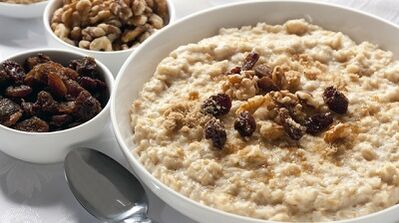
The permitted drinks are green tea and all types of fruit infusions, but only with permitted fruits and berries;Tea with milk and lemon is allowed on the menu.Homemade compotes, fruit drinks made from fresh berries and fruits, and fresh cucumber juice are useful for gout.You should definitely get into the habit of drinking alkaline mineral water every day.
The only spices you can add to dishes are vanillin, cinnamon, bay leaf and citric acid.
You can eat all types of seeds and nuts, with the only exception of peanuts, which contain too many purines.
The patient's daily menu necessarily includes milk porridge, borscht in vegetable broth, fresh vegetable salads and various vegetable dishes.Preference is given to boiled ones;Frying is almost not allowed.
gout diet
Compliance with certain nutritional standards is the basis of the patient's well-being.There is no way to do without it.The daily diet has certain construction rules that you will have to follow throughout your life, because gout is a chronic disease.In order for nutrition to be as effective as possible, it is better to entrust this problem to a competent doctor who will take into account all the nuances of the disease and the characteristics of the patient's body, other existing ailments.
The daily diet necessarily includes liquid foods, the basis of nutrition: vegetable soups, fruit and vegetable salads, compotes and mineral water.Food should be eaten at least 5 times a day.
You should drink at least two liters of water a day, this will help eliminate waste and toxins.There should be a fasting day, in which all meat and fish are completely eliminated.The maximum permitted number of such days is 3. A greater number is neither practical nor reasonable.
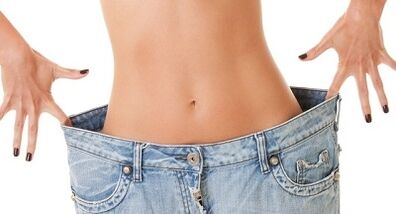
The basis of nutrition is a vegetarian table, a minimum of meat, a maximum of vegetables and fruits.This diet is especially useful for overweight patients.Fasting days should be spent much more frequently than others.
You should not allow yourself to lose weight too quickly.The optimal thing is to lose no more than 2 kg per month.Losing weight too quickly will negatively affect your general condition and can provoke an attack of exacerbation of the disease.
Diet number 6 for gout
Chart No. 6 was prepared by a doctor;The goal of this diet is to normalize purine metabolism, reduce the content of uric acid and salts, which are a product of purine processing.The energy value of this diet is 2700-2800 kcal.This menu is a balanced table in protein content.
Strict compliance with an antipurine diet will prevent exacerbation of the disease and significantly reduce the likelihood of relapse.This example is designed for one week, but you can follow it constantly.
The basic principle of the diet comes down to a strict calculation of all proteins, fats and carbohydrates.Therefore, the amount of protein per day should not exceed 70-90 g per day.Preference is given to animal proteins obtained from milk and its products.The fat level corresponds to 80-90 g per day.1/4 of this volume is of plant origin.The carbohydrate level does not exceed 350-400 g per day.This volume is equivalent to 80 g of sugar.
The daily salt intake for diet No. 6 does not exceed 7-10 g.Liquid consumption ranges between 1.5 and 2 liters, while calories should not exceed 2400-2800.It is equally important to control the amount of microelements consumed.So, potassium is at least 3.5 g, calcium - 0.75 g, thiamine - 1.5 g, retinol - 0.5, ascorbic acid - 150 mg.
Recipes from menu no. 6
The dishes included in the diet of a gout patient are not as difficult to prepare as they might at first seem.Many of them can well be included in the diet of a healthy person.
Vegetable stew
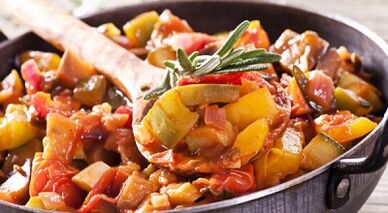
- Large potatoes – 3 pcs.;
- Medium carrots – 1 piece;
- Onion – 1 head;
- Fresh green peas – 1 tablespoon;
- Butter – 1 tablespoon.l.;
- sour cream – 100 g;
- Salt to taste.
Sauté chopped onion in oil, add chopped carrots.Stew well.Add pre-boiled potatoes, peas and sour cream to the finished frying.Add salt.Cook over medium heat for 1/4 hour.
cucumber salad
- Fresh cucumber – 2 pcs.;
- sour cream for dressing;
- Salt to taste.
Cut the cucumber into halves and mix it well in a cup along with the sour cream.For variety, you can add any other permitted vegetables: cabbage, tomatoes.
potato soup
- Potatoes – 3 pcs.;
- 1/2 raw egg;
- Butter – 1 teaspoon;
- Flour – 1 tablespoon;
- fresh vegetables;
- Sour cream – 1 tablespoon.
Make mashed potatoes from potatoes;It is best not to crush them, but rather pass them through a fine sieve.We add the sauce made with oven-dried flour and 80 gr.and potato broth.Make sure to boil the sauce.Then, add the egg and butter to the resulting potato and sauce mixture and boil again.
Sírniki
- Cottage cheese – 250 gr.;
- Semolina – 4 tablespoons.l.;
- Egg.
Mix all the ingredients, you will get a fairly thick paste.If that doesn't work, you can add more semolina.Let it sit for a while so that the cereal disperses and swells slightly.When the dough puffs up a little, you can bake.Form neat pancakes and roll them in flour.Fry on both sides.It can be eaten hot with sugar or cream cheese.
Potato pancakes
- Large potatoes – 3 pcs.;
- Egg – 1 piece;
- Flour – 20 g;
- Sour cream;
- Vegetable oil – teaspoon.
Grate the peeled potatoes on the finest grater, add flour and egg to the resulting mixture and mix well.Place the dough in the hot pan and fry on both sides for 5 minutes.Serve with sour cream.
curd casserole
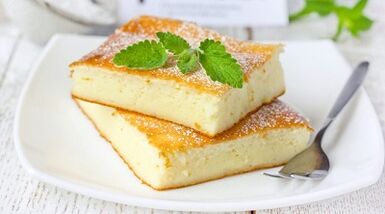
- Milk – 50 ml;
- Cottage cheese – 75 g;
- Egg whites – 2 pcs.;
- Sour cream;
- Butter;
- Sugar.
Mix the ingredients well (except sour cream), put the resulting dough in a mold and put in the oven heated to 150 degrees.Bake until the top is lightly golden.Before serving, sprinkle with sour cream.
Vegetarian borscht
- Water – 3 liters;
- Potatoes – 2 pcs.;
- Vegetable oil – 2 tablespoons;
- Onion – 1 piece;
- Carrots – 100 g;
- Beet – 150 g;
- Cabbage – 100 g;
- Tomato paste – 1 tsp.
Add a tablespoon of salt to the boiling water and add the diced potatoes.After 10 minutes of boiling, add the shredded cabbage to the pan.At this moment, sauté the onion in a pan;When it is slightly cooked over low heat, add the grated carrots one by one and then the beets.
Let the vegetables cook well and add the pasta.It can be replaced with a glass of tomato juice.When the vegetables are ready, transfer them to the pan.You can add herbs, a little pepper and garlic.You can add sour cream to the finished dish.
Sample menu for diet number 6.
This is one of the options for what a weekly diet would be like for a patient with gout.
day one
- Breakfast: oatmeal porridge with milk with dried fruits (but not raisins), tea with milk
- Second breakfast: cottage cheese pudding.
- Lunch: soup with buckwheat, vegetable pancakes (zucchini), seasoned with sour cream and fruit jelly.
- Snack: a glass of tomato juice.
- Dinner: fresh white cabbage salad with apple.
day two
- Breakfast: vegetable croquettes (carrots and rice), sour cream, tea with lemon.
- Second breakfast: fresh pear juice.
- Lunch: fresh vegetable stew, pasta casserole with sour cream, green tea.
- Snack: baked apple with honey.
- Dinner: beet salad, toast with unsalted cheese.
Day three
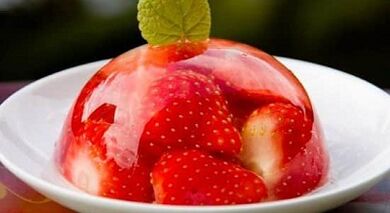
- Breakfast: milk porridge with cherries and rosehip compote.
- Second breakfast: sour cream with cottage cheese.
- Lunch: cabbage soup, cheesecake, milk tea.
- Snack: strawberry jelly.
- Dinner: potato pancakes with sour cream.
Day four
- Breakfast: omelet with dill, cheese sandwich and fresh fruit compote.
- Second breakfast: carrot salad with grated apple, dressed with sour cream.
- Lunch: beet soup, kefir pancakes with sour cream, tea with lemon.
- Snack: fresh apple.
- Dinner: rice pudding, pumpkin and cinnamon porridge.
Day five
- Breakfast: cottage cheese seasoned with honey, tea with wild herbs.
- Second breakfast – pear.
- Lunch: noodle soup with vegetables, cereal cutlets, compote.
- Snack: apple.
- Dinner: eggplant with cheese and tomato.
Day six
- Breakfast: millet casserole with honey, tea with milk.
- Second breakfast: banana.
- Lunch: rice soup, zrazy with cabbage and gelatin.
- Snack: kefir with marshmallows.
- Dinner: baked potatoes with vegetables.
Seventh
- Breakfast: two hard-boiled eggs and cucumber salad.
- Second breakfast: toast with cheese.
- Lunch: millet porridge with milk, pancakes with cheese.
- Snack: fresh fruit.
- Dinner: stewed cabbage, toast with peanut butter.
How to eat during an exacerbation
Table number 6 is very suitable for a patient in remission, but in an exacerbation situation, nutrition must be radically different.Only in this case will a qualitative change for the better really occur and the aggravation will disappear.The basic rule of nutrition comes down to a complete rejection of meat and fish dishes, only fruits and vegetables.
What does the menu look like during an exacerbation period?
Before breakfast, half a glass of warm alkaline mineral water, which can be replaced with rosehip broth.
- Breakfast: 120 g of oatmeal with milk and a glass of milk.A prerequisite is that the porridge be liquid.
- Second breakfast: a glass of freshly squeezed apple juice or a raw apple.
- Lunch – pureed vegetable soup – 120 g, fruit jelly.
- Snack: a glass of fresh carrot or tomato juice.
- Dinner: 120 g of rice porridge with liquid milk, a glass of applesauce.
- Second dinner: a glass of kefir.
- Before going to bed, you can drink tea with milk and honey.
An important condition is careful control of the volume of portions;They should be more than modest, approximately half the daily ration.After the exacerbation period passes, you can introduce dishes with meat and fish, not only boil food, but also fry it.






















